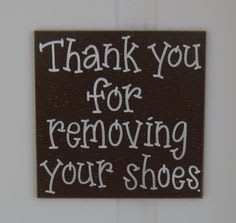Our parsha contains the very first revelation experienced by Moshe Rabbeinu, the greatest of all prophets: “Don’t approach here; remove your shoes from your feet, for the place where you are standing is holy ground”. (Shemot 3:5.) Removing the shoes seems to be a powerful testimony to spiritual elevation and holiness. As the Ramban points out, we find that Yehoshua also was bidden to remove his shoes when he approached holy ground (Yehoshua 5:15), and the Kohanim in the Temple are likewise forbidden to wear anything on their feet.
The Midrash tells us that wearing shoes is forbidden anyplace the Shekhina dwells. (Shemot Rabba.) Another example is that on Yom Kippur, when we are likened to holy angels, we go without shoes. (Yoma 77a)
Yet sometimes removing the shoes seems to have the opposite symbolism, one of degradation. The brother who declines yibum with his brother’s widow is subjected to the seeming humiliation of having his shoe removed as she spits in his face (Devarim 25:9).
We learn from Yechezkel that a mourner is obligated to remove his shoes as an expression of his sorrow. (Yechezkel 24:17). Wearing shoes is so important that a special blessing is said on wearing them, acknowledging that HaShem provides all of our needs (sheasa li kol tzarkhi), and our Sages urge us to sell even the beams of our homes in order to buy a pair of shoes. (Shabbat 129a.)
Several commentators explain this dichotomy by pointing out that shoes are a kind of insulation from the ground. Normally, the ground is a symbol of lowliness; wearing shoes emphasizes that while we are supported by the earth, we nonetheless stand above it and are distinguished from it. But wherever the Divine Presence dwells, then on the contrary we don’t seek to be separated from the ground but rather connected to it. We may add that when we personally are on a low spiritual level we require this protection, but when we experience a spiritual elevation we rise above our material natures and are no longer threatened by the proximity of the earth.
The teachings of Rav Nachman of Breslov connect this further to the curse of the earth. Originally the entire world was the abode of the shekhina. But the sin of Adam and Chava, compounding the earlier sin of the earth, led to the earth being cursed. (Bereshit 3:17-19.)
This is when Hashem prepared for Adam and Chava garments of leather (Bereshit 3:21) – which this approach identifies with shoes, the garment most connected with leather throughout the ages and especially in the halakha, where a shoe not made out of leather is usually not considered a shoe at all.
But in a place where Hashem succeeds in infusing with His presence, or at a time when we are able to partially overcome the sin of Adam and gain repentance, then we are no longer in need of these garments of ‘or (leather). Rather, we merit the garments of or (light) mentioned in the Midrash (Bereshit Rabba); the Zohar (Bereshit, I:36b) tells us that these were the original garments prepared for mankind.
(Based on Likutei Halakhot, Yibum 3:8-9. This idea complements last week’s shiur on the significance of earth in burial.)
UP AND DOWN, LEFT AND RIGHT
Remarkably, this religious distinction between the two kinds of shoe removal has a practical halakhic consequence. Since shoes are normally a symbol of dignity, therefore we generally remove the left shoe first, to leave the more important right shoe on longest. (SA OC 2:5.) But when the Kohen ascends the duchan for Birkhat Kohanim, removing his shoes is a symbol of elevation, since it prepares him for the blessing and also since this reminds us of the Kohanim who removed their shoes before serving in the Temple. The same is true of Yom Kippur, when removing the shoes reminds us that we are likened to the angels. In these instances, the right shoe is removed first, since taking off the shoe is a mark of honor. (Rav Kook, Orach Mishpat Nesiat Kapayim 25, cited in Luach Eretz Yisrael, Moadei Rayah, and Ishei Yisrael.)
Rabbi Asher Meir is the author of the book Meaning in Mitzvot, distributed by Feldheim. The book provides insights into the inner meaning of our daily practices, following the order of the 221 chapters of the Kitzur Shulchan Arukh.
The words of this author reflect his/her own opinions and do not necessarily represent the official position of the Orthodox Union.



